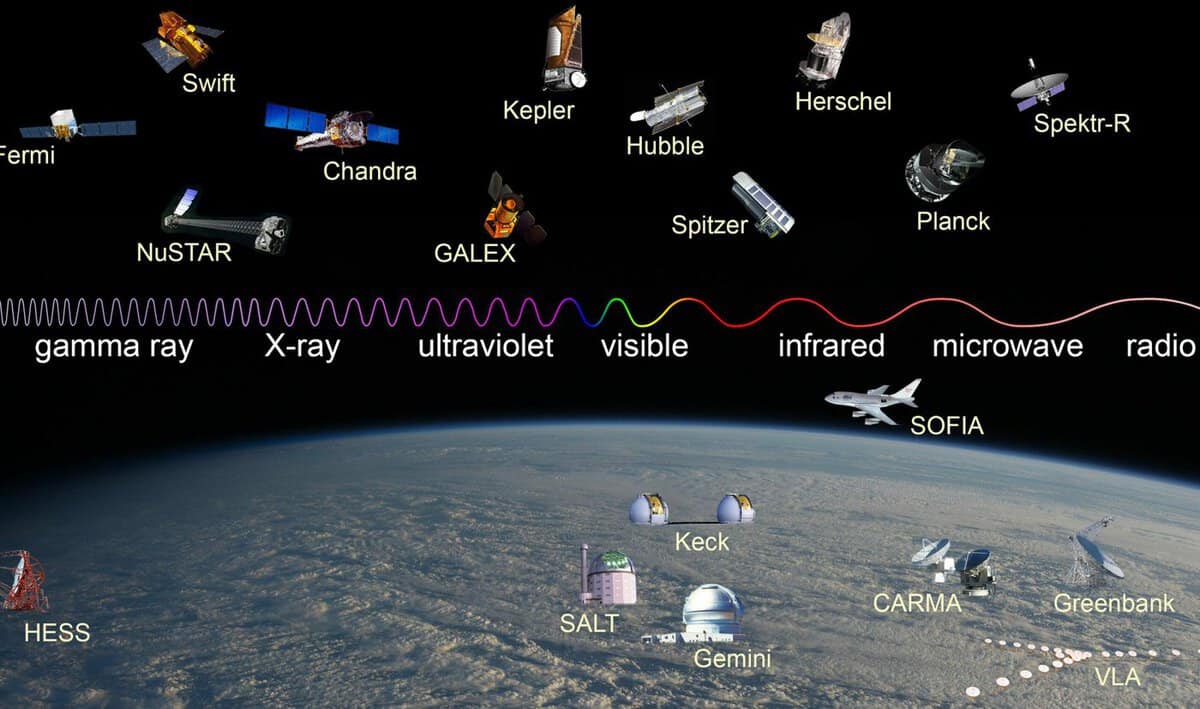Throughout the ages, individuals have observed the Sun’s movements during daylight hours and the behaviors exhibited by the Moon and stars at night. They have been curious about the causes behind these phenomena. In more recent times, scientists and astronomers have been able to conduct research on these celestial bodies in order to elucidate their motions.
Astronomy is a scientific discipline that focuses on the study of celestial objects, such as stars, planets, comets, nebulae, star clusters, and galaxies, as well as the various phenomena that occur beyond Earth’s atmosphere, such as cosmic background radiation. It encompasses the study of the evolution, physics, chemistry, meteorology, and motion of celestial objects, as well as the formation and development of the universe.
Astronomy is an observational science by nature, and therefore, astronomers and astrophysicists must have a thorough understanding of how their data is collected and analyzed.
Warning. If your instructor discovers plagiarism in your work, you will face serious consequences (including possible expulsion). If you are unable to write the content yourself, you can order it from here.
Observational astronomy focuses on gathering data about the observable universe, in contrast to theoretical astronomy, which primarily involves calculating the measurable outcomes of physical models. It involves the practice and study of observing celestial objects using telescopes and other astronomical instruments.
There is also a branch of amateur observational astronomy, which is pursued as a hobby by non-professional astronomers. It involves the study and observation of the universe by individuals who are not formally trained in the field.
Unique Features
Astronomical information is primarily transmitted through electromagnetic radiation, which encompasses a wide range of wavelengths. This spectrum is divided into various bands, each corresponding to a specific wavelength range. The table below illustrates these bands and provides information on the energy of photons in electronvolts and the temperature in kelvins. Each band carries distinct information, as the radiation at different wavelengths is produced and altered by different physical phenomena. Moreover, within each band, information is conveyed in diverse forms, including spectral, temporal, spatial, polarization, and intensity variations.
Characteristic photon energies and temperatures
| Band | Energy (eV) | Temperature (K) |
| gamma radiation | 10 to the power of 5 | 10 to the power of 9 |
| X-ray radiation | 10 to the power of 3 | 10 to the power of 7 |
| ultraviolet | 10 | 10 to the power of 5 |
| visible | 1 | 10 to the power of 4 |
| infrared radiation | 0.1 | 10 to the power of 3 |
| radio | 10 to the power of -6 | 10 |
| microwave | 10 to the power of -3 | 0.01 |
Most of the radiation with wavelengths shorter than visible light is blocked by the Earth’s atmosphere, which means that scientists can only directly observe ultraviolet, X-rays, and gamma rays from space (although it is possible to indirectly observe gamma rays from Earth).
Being able to overcome the distortions caused by the atmosphere is also advantageous when observing visible and infrared wavelengths. In space, stars do not “twinkle,” so the level of observable detail is only limited by the size of the instrument being used. However, taking telescopes into space is a costly endeavor and repairs can present significant challenges. As a result, astronomers continue to construct telescopes for use both on Earth and for deployment in space.
When it comes to astronomical observations, the experimental conditions are uncontrolled, meaning that people are unable to directly examine or manipulate the object of interest. This lack of control leads to the presence of various intermediate regions that can impact the flow of information from the astronomical source to the observer. These intermediate regions encompass the intergalactic, interstellar, and interplanetary environments, as well as the Earth’s atmosphere. The extent to which these regions influence the flow of information is only partially understood. Additionally, the intergalactic, interstellar, and interplanetary environments themselves are astronomical objects that physicists have limited knowledge about. Furthermore, while scientists possess extensive information regarding the overall characteristics of the Earth’s atmosphere, they often lack the necessary level of detail when it comes to the smallest relevant spatial scales (centimeters) and time scales (milliseconds).
In the field of astrophysics, there are instances where the intermediate region becomes the focus of attention. Instances of this include the absorption of galactic H I (21 cm), quasar absorption line systems (Ly α), studies on gravitational lensing and microlensing, and the Sunyaev-Zel’dovich effect. In order to investigate the effects caused by these intermediate regions, it is necessary to have some understanding of the sources of background radiation.
Categories
The classification of observational astronomy into categories is determined by the observed range of the electromagnetic spectrum:
- Radio astronomy – A branch of astronomy that, similar to optical astronomy, examines celestial objects (such as planets, stars, galaxies, etc.) by “capturing” the light they emit, but unlike optical astronomy, it is not visible to the naked eye. By utilizing specialized instruments (radio telescopes), radio astronomers detect the radio waves emitted by these objects.
- Infrared astronomy involves observing the infrared radiation emitted by various celestial objects to study them. This includes planets in our solar system, stars, nebulae, and galaxies, which emit energy in the infrared part of the electromagnetic spectrum (around one micrometer to one millimeter). By using infrared astronomy techniques, scientists can examine objects that are typically invisible to optical telescopes on Earth due to the obstruction of dust particles.
- Optical astronomy – The field of astronomy in which scientists observe and analyze electromagnetic radiation from the universe that falls within the wavelength range that is visible to the human eye, also known as visible light. Astronomers utilize telescopes to collect this light and study specific celestial objects, as well as develop theories about the past, present, and future of these objects and the universe as a whole. While human eyes also capture light, they are only sensitive to specific wavelengths, which is why the light they perceive is referred to as visible light. Optical astronomy, also known as visible light astronomy, utilizes optical elements such as lenses and mirrors to measure visible light. This encompasses electromagnetic waves with wavelengths ranging from 380 to 750 nanometers, with shorter wavelengths corresponding to blue light and longer wavelengths corresponding to red light, and a full spectrum of visible colors in between. The majority of celestial objects emit some amount of visible light.
- High-energy astrophysics investigates the Universe in incredibly challenging circumstances. Matter under extreme densities and temperatures, high velocities, immense magnetic fields, and powerful gravity in black holes, neutron stars, exploding supernovae, and rapidly moving jets continually push the boundaries of human comprehension. The comprehension of these extraordinary conditions is crucial in deciphering the peculiar energetic events that unfold in active galactic nuclei, pulsars, supernovae, and gamma-ray bursts.
- Coverage. In the field of astronomy, a coverage event takes place when an object obstructs the view of a distant object for an observer. Eclipses are occurrences that happen regularly and can be predicted due to the orbital movements of planets, dwarf planets, moons, and asteroids around the Sun, causing them to pass in front of the stars in the background. Our Moon has the ability to cover or eclipse the Sun multiple times throughout the year, typically ranging from four to six times. If an individual happens to be in the path of the Moon’s shadow during one of these events, they will be able to witness a total solar eclipse. On the other hand, if someone is in an observation area of a solar eclipse but not directly in the path of the Moon’s shadow, they will only be able to witness a partial solar eclipse. The observation of a star eclipse follows similar geographic requirements. However, to witness a total solar eclipse, one must be positioned within the shadow casted by the Moon, which spans a width of approximately 100 to 274 kilometers. In order to witness a star eclipse, an individual must be within the narrow path of the eclipse, which is typically only a few kilometers wide along the Earth’s surface.
Observation Techniques in Astronomy
Airborne and Spaceborne Infrared Telescopes
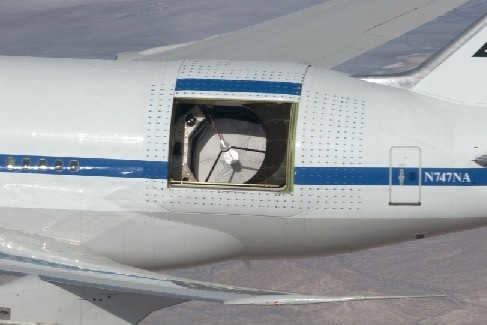
The interior of the SOFIA airplane features a large telescope and additional instruments that take up a considerable part of the cabin.
The Stratospheric Observatory for Infrared Astronomy (SOFIA) enables the observation of a majority of the water vapor present in the Earth’s atmosphere.
Infrared observations from aircraft have been conducted since the 1960s, starting with the utilization of a telescope with a 15-centimeter diameter. From 1974 to 1995, a 0.9-meter airborne telescope was operated by NASA. Positioned at an altitude of 12 kilometers, the telescope was situated above 99% of atmospheric water vapor. More recently, NASA has constructed a significantly larger 2.5-meter telescope known as the Stratospheric Observatory for Infrared Astronomy (SOFIA).
Ascending even higher and conducting observations from space itself offers significant advantages for infrared astronomy:
- The elimination of interference caused by the atmosphere;
By utilizing infrared observations, scientists have the ability to identify colder components of celestial entities, like dust formations surrounding areas where new stars are born and the remains of fading stars that cannot be perceived in images captured in visible light.

These images were captured by the Spitzer Space Telescope. They showcase the Flame (Torch) Nebula, which is a region where stars are being formed. Following that is the Cassiopeia A, which is a remnant of a supernova explosion. Lastly, there is a large planetary nebula known as the Spiral Nebula.
These infrared images depict the process of star formation, the aftermath of a star’s explosion, and the shedding of an old star’s outer shell. Since our eyes cannot detect infrared rays, we are unable to perceive the colors emitted by these regions. Therefore, astronomers have selected specific colors to highlight certain details such as composition or temperature in these regions.
Hubble Space Telescope
The Hubble Space Telescope, which was launched in April 1990, marked a significant advancement in the field of astronomy. With a lens diameter of 2.4 meters, it holds the distinction of being the largest telescope ever sent into space.
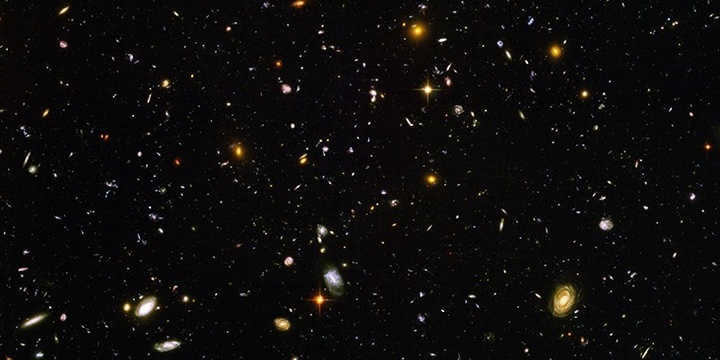
The photograph displays celestial bodies and other entities visible in the ultra-deep field. Hubble’s ultra-deep field image captures a specific area of the cosmos, created using data collected between September 24, 2003, and January 16, 2004. This data allows us to explore galaxies that existed approximately 13 billion years ago.
One of the primary functions of the telescope is to assist astronomers in obtaining intricate images of celestial objects ranging from the solar system to the most remote galaxies. One of its notable accomplishments is the Hubble Ultra Deep Field. This image showcases a small portion of the sky that was observed for nearly 100 hours and contains depictions of approximately 10,000 galaxies. Some of these galaxies formed during a time when the universe was only a fraction of its current age.
Space is the only place where observations can be made in ultraviolet, X-rays, and direct gamma rays (high energy electromagnetic wave). The opportunity for such observations was initially presented in 1946 when V2 rockets, obtained from Germany after World War II, were utilized. The U.S. Navy Research Laboratory equipped these rockets with instruments for a groundbreaking series of missions that were initially intended to detect ultraviolet radiation from the Sun. Subsequently, numerous other rockets have been launched to facilitate X-ray and ultraviolet observations of the Sun, as well as other celestial entities.
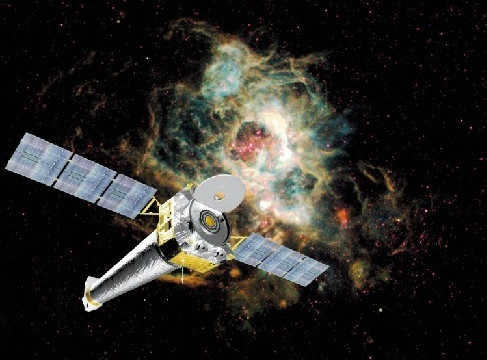
An artist’s rendition of the Chandra X-ray satellite can be seen in front of a vibrant gas nebula in outer space.
The Chandra X-ray satellite, which was launched by NASA in July 1999, is currently the most advanced X-ray telescope in the world.
Since the 1960s, numerous high-energy observatories have been placed in orbit to detect and study the Universe using shorter wavelengths. “Chandra” is able to generate X-ray images with an unprecedented level of resolution and sensitivity. Developing instruments capable of collecting and focusing energetic radiation, such as X-rays and gamma rays, presents a significant technological challenge.
Spectrometer
The spectrometer, an essential invention in the exploration of celestial bodies, plays a significant role in understanding the universe.
A spectrometer is a versatile tool used to measure variations in physical attributes across a specific range, also known as a spectrum. It can analyze mass-to-charge ratios in a mass spectrometer, alterations in nuclear resonance frequencies in an NMR spectrometer, or changes in the absorption and emission of light at different wavelengths in an optical spectrometer.
In the field of astronomy, this device enables scientists to analyze the distinct colors present in the light emitted by distant stars. Each chemical element emits a unique color spectrum when it undergoes combustion or is exposed to intense heat.
The spectrometer can determine the chemical composition of distant stars by analyzing the color distribution. If the colors are observed to be shifted, it is possible to calculate the speed of the star. This approach is comparable to the use of Doppler radar in weather forecasting to determine the movement of storms.
When the spectrometer measures a redshift, meaning the colors are shifted towards the red end of the spectrum, it indicates that stars and galaxies are generally moving away from Earth, as if there was an explosive event. This discovery contributed to the development of the Big Bang theory.
Observations serve as the fundamental building blocks of astronomy. Presently, astronomers have the capability to examine the Moon, planets, and distant stars with greater detail. This enhanced visibility allows them to make more precise measurements of celestial bodies, enabling them to make accurate predictions about their future positions.
The movements of astronomical objects play a crucial role in determining various natural phenomena such as the day-night cycle, the changing of seasons, the ebb and flow of tides, the timing of eclipses, and the visibility of comets and meteor streams. These easily observable astronomical events have been instrumental in the development of timekeeping, navigation techniques, as well as the creation of myths and legends across different cultures throughout history.
How valuable was the information provided in the article for you?
The field of astronomy research is divided into several significant areas, including the study of the solar system, interstellar matter, and galaxies. Let us now acquaint ourselves with the research conducted on the solar system.
Exploring the Solar System
The Solar System is comprised of a celestial body known as the Sun and eight expansive planets, each accompanied by their own natural satellites. It is worth noting that there are over 160 known satellites.
Additionally, within the Solar System, there exist hundreds of thousands of diverse small objects, including asteroids, comets, and meteor streams, all in constant motion around the Sun. These objects are composed of the remnants of deceased asteroids and comets.
The major planets are arranged in order of distance from the Sun: Mercury, Venus, Earth, Mars, Jupiter, Saturn, Uranus, and Neptune.
Mercury and Venus, situated within the orbit of Earth, are referred to as the inner planets.
Mars, Jupiter, Saturn, Uranus, and Neptune, located further away from Earth, are known as the outer planets.
Mercury, Venus, Mars, Jupiter, and Saturn are easily visible to the naked eye and have been observed since ancient times. These celestial bodies were referred to as “wandering stars” by the ancients due to their apparent movement relative to the fixed stars.
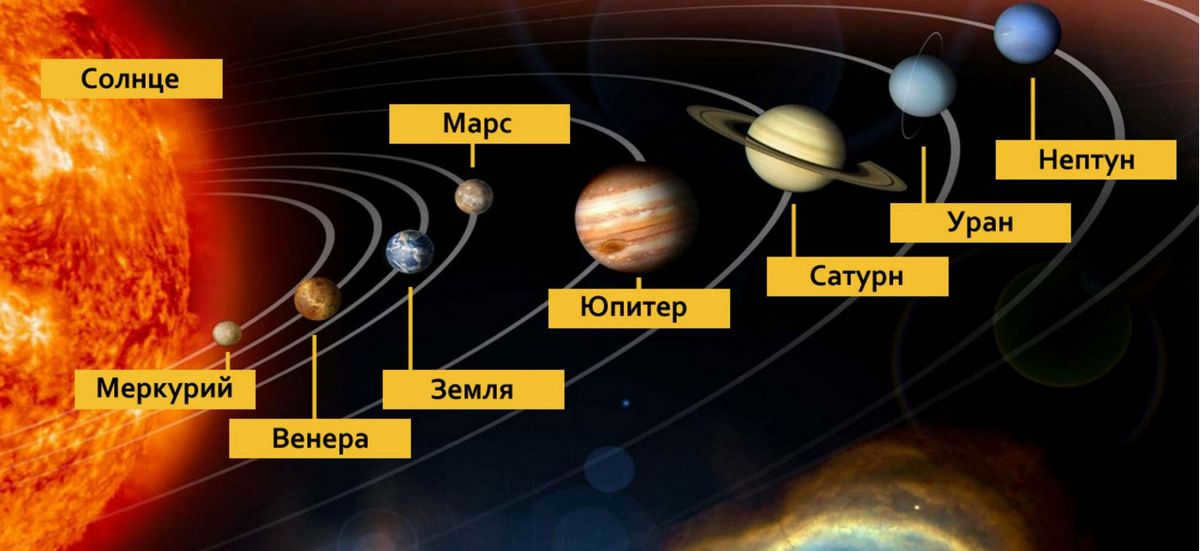
Figure 1: Solar system. Author24 – online exchange of student papers
By conducting investigations and examining the movement of planets, experts have the ability to analyze the laws governing the interaction between objects in motion. Through careful observation, it becomes possible to test fundamental theories of physics, such as Albert Einstein’s renowned theory of relativity.
The study of celestial body mechanics enables the development of calculations that facilitate the achievement of various objectives for space-bound terrestrial vehicles.
By studying the Sun, experts are able to provide answers to questions pertaining to a wide range of physical phenomena occurring on the celestial body closest to us.
Studying the Sun provides valuable insights into the functioning of distant stars.
The Moon stands as the sole extraterrestrial body that has been explored by humans. The advancements in rocket engineering and space exploration have played a pivotal role in our understanding of this celestial entity.
Let us highlight the key milestones in this endeavor.
- In 1959, the Soviet Luna-3 spacecraft captured images of the previously unknown far side of the Moon.
- Between 1964 and 1965, the American research vehicles “Ranger” obtained close-up images of the Moon.
- From 1966 to 1968, both the Soviet and American landers Luna-9, Servier-5, -6, and -7 successfully touched down on the Moon’s surface. These missions helped determine the composition and stability of the lunar soil.
- In 1969, the historic first lunar landing occurred, paving the way for subsequent manned missions by American spacecraft and unmanned expeditions by Soviet automated stations.
- After a period of inactivity in the mid-1990s, a new phase of unmanned exploration of the Moon began.
As a result, scientists gained knowledge about the chemical and physical makeup of the Moon’s soil and rocks, as well as their age. They created maps that illustrate the minerals and geology found on the Moon’s surface. Additionally, traces of water have been discovered.
Meteorites play a crucial role in studying the history of our solar system. These ancient rocks are believed to be around 4.5 billion years old. The study of comets is also significant, as they formed during the early stages of the solar system. Therefore, comets contain key materials from the early solar system.
Special spacecraft are used to study comets, and valuable information can also be obtained from meteors. When meteors burn up in the Earth’s atmosphere, they leave behind small particles that were once part of comets as they approached the Sun.
The Exploration of Celestial Bodies
In ancient times, there was a belief that the stars were motionless. It was believed that they were affixed to a celestial sphere that encircled the Earth and rotated around it.
Clusters of brilliant stars that captivated human attention were given names inspired by heroes, mythical creatures, everyday objects, and monsters.
According to modern theories, stars are gas spheres similar to our Sun. Stars emit light constantly, but due to the Earth’s atmosphere, they are not visible during the daytime.
Scientists categorize stars based on various attributes, including their distance from Earth, mass, brightness (radiation output), temperature, chemical composition, age, and velocity of movement.
However, due to the vast distances between them, stars appear to be stationary to us, making them an almost perfect point of reference for studying the motion of objects in the solar system.
The distance to nearby stars is measured using the triangulation method, which relies on the diameter of the Earth’s orbit. To determine the distance to distant stars, their apparent brightness is compared to their actual luminosity. This luminosity can be estimated by analyzing the star’s spectrum.
By studying the spectra of stars, scientists have made an intriguing discovery: at least 50% of stars are actually binary, meaning they have a companion star. Additionally, they have been able to identify satellites and even other planets orbiting these stars, thanks to the Doppler effect. This effect, which is caused by the movement of stars around a central point of mass, is observed as a shift or splitting of the spectral line.
This finding opens up the possibility that some of these star satellites could potentially harbor their own unique forms of biological life.
These stellar satellites, which are similar in size to planets and are also known as brown dwarfs, or in some cases are the same size as planets (known as exoplanets), present an exciting area of exploration for scientists.
In the quest to detect other intelligent life forms, astronomers are actively trying to intercept radio signals from space or send their own messages into the vast unknown.
Space exploration also involves the examination of interstellar material – the sparse gas and particles that occupy the space between stars. Specifically, this material is frequently found in the disk of the Galaxy, as well as in its spiral arms.
There are also entire collections of this material that gather together to form clouds. For instance, the Orion Nebula consists solely of interstellar matter and emits light due to the proximity of a nearby star.
Interstellar material also serves as the building blocks for the creation of new stars. This occurs within the most massive and coldest clusters of material, where the force of gravity compresses it. These clusters are extremely dense and prevent starlight from passing through. However, they can be studied using infrared and radio telescopes.
By examining the radio emissions emitted by interstellar gas, scientists were able to determine the precise locations of the spiral arms within our Galaxy. Through the careful tracking of radio emissions originating from interstellar gas, astronomers were able to gain insights into the precise positioning of the spiral arms within our Milky Way.
The investigation of nearby galaxies has yielded important findings regarding the diversity of galaxies in terms of their shapes, sizes, and masses. Interestingly, the stars that compose these galaxies closely resemble those that surround us. Additionally, it has been observed that galaxies are moving away from us, with the rate of this movement increasing as their distance from us increases. This phenomenon was discovered through the use of the Doppler effect, which involves the observation of spectral line shifts in galaxies.
Observations of the stars and celestial bodies require a series of procedures, each of which may have restrictions on the data that can be gathered. Telescopes are used to collect radiant energy, and this energy is then directed towards a detector that has been carefully calibrated to ensure accurate results. The detector’s sensitivity and spectral response are well-documented. To ensure that observations made with various instruments operating in different wavelength ranges and at distant locations can be compared, precise pointing and timing are crucial. Additionally, the radiation collected must undergo spectral analysis in order to identify the underlying processes that produce it.


Enrich your professional skills
Innovative teaching techniques for chemistry based on the Federal State Educational Standards
In addition to the discount mentioned above, you can also take advantage of the discount offered by your educational institution. The amount of this discount depends on the number of your colleagues who have already completed Infoworks courses.
Currently, 58,742 educational institutions are benefiting from additional discounts ranging from 2% to 25%. To find out the exact discount available to all employees of your educational institution, simply log in to your personal Infoworks account.


Enroll in our professional retraining course
Official recognition of educational programs for primary, secondary, and high school education
We can offer an additional discount for your school if multiple colleagues have already completed Infowork courses.
Currently, we have additional cumulative discounts ranging from 2% to 25% available for 58,742 educational institutions. To find out the specific discount available for all employees at your school, please log in to your personal Infoworks account.


Professional development course
Personnel management and labor relations registration
We can apply your educational institution’s discount to this offer (the percentage depends on how many of your colleagues have already taken Infowork courses).
Currently, 58,742 educational institutions are eligible for additional discounts ranging from 2% to 25%. To discover the applicable discount for all employees of your educational institution, please log in to your personal Infoworks account.


Parenting Tips for Homeschooling
Discover useful resources and materials for educators and homeschooling parents
Explore a vast collection of over 10,000 educational materials designed for both classroom and home learning
Online Courses for Educators
Evgeny Yamburg Pavel Severinets
Revolutionizing Education in the upcoming academic year 2023
Join our virtual session designed for teachers and educational administrators
Discover a vast collection of teaching resources tailored to your subject (category), grade level, textbook, and topic:
Explore over 6,330,809 materials available in our database
Additional Resources
Check out these courses:
- Advanced training course “Enterprise Economics: Assessing Performance”
- Professional development course “Student Practice Organization in accordance with the requirements of the Federal State Educational Standards for Pedagogical Training”
- Advanced training course “Marketing in Organization as a Means of Attracting New Customers”
- Advanced training course “Student Practice Organization in accordance with the requirements of the Federal State Standard for Medical Education”
- Advanced training course “Teaching Astronomy in Secondary School: Specifics”
- Advanced training course “Business Plan Development and Investment Project Analysis”
- Professional retraining course “Astronomy: Theory and Methodology of Teaching in Educational Organization”.
- Professional retraining course “Secretary of the Head with English Language Knowledge: Activity Organization”.
- Professional retraining course “Metrology, Standardization, and Certification”.
- Professional retraining course “Insurance (Reinsurance) Process Organization”.
- Professional retraining course “Advertising and PR Service Organization and Management”.
- Professional retraining course “Information Support of Business Processes in the Organization”.
- Professional Retraining Course “Quality Management”.
Drop your thoughts
If you think that the content infringes on copyright or should be taken down for any other reason, you have the option to file a complaint about the material. Remove material
Author’s details
- Active on the site for: 1 year and 9 months
- Followers: 0
- Total views: 912459
- Total posts: 4656
Online Courses
for Educators
Duration: 67 minutes
Duration: 22 minutes
Watch a video lecture on the role and significance of lesson analysis in educational management. Learn how to determine the areas for development of a teacher’s professional skills based on lesson analysis, in accordance with the requirements of the FSES.
Duration: 36 minutes
Gift vouchers
The users who have posted the materials on the site are responsible for resolving any disputes regarding the materials and their content. Nevertheless, the site administration is prepared to offer full assistance in resolving any matters concerning the operation and content of the site. If you come across any unauthorized use of materials on this site, kindly notify the site administration by using the feedback form.
All content on this website is either created by the website’s authors or submitted by users, and is provided for informational purposes only. The copyrights for these materials belong to their respective authors. It is strictly prohibited to copy any materials from this website, in whole or in part, without written permission from the website administration. Please note that the views expressed by the administration may not necessarily align with those of the authors.
1. What is the focus of astronomy? Enumerate the key aspects of astronomy.
Astronomy is dedicated to exploring the composition, movement, origin, and progression of celestial entities, their systems, and the entirety of the universe. In simpler terms, astronomy delves into understanding the structure and evolution of the universe.
Crucial objectives in the field of astronomy encompass elucidating and foretelling astronomical phenomena, such as solar and lunar occultations, the appearance of periodic comets, the passage of asteroids, and substantial meteoroids. Additionally, astronomers strive to comprehend the nature of asteroids, large meteoric bodies, and comet nuclei.
2. What led to the emergence of the field of astronomy? Describe the key stages of its evolution.
Similar to other scientific disciplines, astronomy originated as a response to practical human necessities. These necessities included the need for navigation during nomadic lifestyles, the ability to predict agricultural seasons, and the development of calendars for measuring time and chronology.
3. What does astronomy study and in what order of increasing size?
Astronomy focuses on the study of various celestial objects and their systems. These objects include galaxies, stars, the interstellar medium, planets, planetary satellites, dwarf planets, and small bodies within the solar system. By investigating these objects, astronomers are able to explain and predict a range of astronomical phenomena such as solar and lunar eclipses, the appearance of periodic comets, and the movement of planets and asteroids. Additionally, astronomy delves into the processes occurring within the interior of the Sun and stars, as well as the evolution of celestial bodies and the Universe as a whole.
4 What are the different fields of astronomy? Give a brief description of each.
- Practical Astronomy. This branch of astronomy focuses on developing methods of orientation, determining the geographical position of the observer, and accurately measuring time based on astronomical observations. It was essential for the development of trade and navigation.
- Celestial mechanics. Celestial mechanics is the field of study that deals with the motion of celestial bodies. Scientists in this field analyze and understand the movements and interactions of planets, moons, and other celestial objects.
- Comparative planetology. Comparative planetology involves the study and comparison of the Earth with other planets and satellites using optical instruments. By examining the similarities and differences between these celestial bodies, scientists can gain insights into the formation and evolution of planets.
- Astrophysics. Astrophysics focuses on the study of physical phenomena and chemical processes in celestial bodies, their systems, and outer space. It involves the use of various branches of physics, such as electromagnetism and thermodynamics, to understand the properties and behavior of astronomical objects.
- Stellar astronomy. Stellar astronomy is the study of the motion of stars in our Galaxy and the properties of other stellar systems. Scientists in this field investigate the life cycles of stars, their formation, evolution, and eventual death.
- Radio astronomy. The field of study that focuses on analyzing radio emissions emitted by the Sun and distant objects in space.
5. What is a telescope and what is its purpose?
Telescopes are utilized to gather the light emitted by celestial bodies for research purposes and to capture their images. A telescope enhances the field of view through which celestial bodies are observed and captures a significantly greater amount of light compared to the unaided human eye. As a result, it becomes possible to observe surface details of nearby celestial bodies that are otherwise invisible from Earth, as well as numerous dim stars.
6. What is the significance of astronomy for practical human activities?
Astronomy plays a crucial role in solving various problems related to astronautics. It helps in making optimal decisions and accurate calculations regarding the orbits of artificial celestial bodies, determining distances to celestial bodies within the solar system, and selecting the appropriate timing for interplanetary travel. Furthermore, astronomy enables scientists to study matter in states that are not possible to observe under terrestrial conditions. Additionally, astronomical research helps in identifying potential asteroid threats.
There are three main groups of methods used in astronomy or astronomical research:
Now, let’s take a brief look at these methods.
Astronomical Observations: A Unique Way to Study the Universe
Astronomical observations serve as the primary method for studying celestial bodies and events, allowing us to record and analyze what occurs in both near and far space. These observations are the cornerstone of experimental knowledge in the field.
Typically, astronomical observations and the subsequent data processing take place in specialized research institutions known as astronomical observatories.
Modern observatories are equipped with advanced instruments such as telescopes, light-receiving and analyzing equipment, auxiliary devices, and high-performance computers. These tools enable astronomers to gather and interpret valuable data.
Now, let’s delve into the unique aspects of astronomical observations:
- Characteristic #1. Observations possess a high level of inertia, thus necessitating extended periods of time. It is challenging to actively interact with celestial bodies, except for rare instances involving manned and unmanned space exploration. In order to capture various phenomena, such as the alteration of Earth’s axial inclination towards the orbital plane, it typically requires observations spanning thousands of years. Consequently, the astronomical knowledge passed down from ancient civilizations like Babylon and China, despite some disparities with modern standards, remains relevant.
- Characteristic #2. Observational processes predominantly occur from the surface of the Earth, which is in constant motion. As a result, an Earth-bound observer can only observe a specific portion of the magnificent night sky.
- Angular measurements, which are made by observing objects, serve as the basis for calculating their linear dimensions and distances. However, these calculations can be quite inaccurate because the angular sizes of stars and planets, measured with optics, do not rely on their distance.
The optical telescope is the primary tool used for astronomical observation.
Each type of optical telescope operates based on a specific principle, but regardless of the type, its main purpose is to gather as much light as possible from luminous objects such as stars, planets, and comets in order to create images of them.
There are different types of optical telescopes:
A refractor, or lenticular telescope, produces images through the refraction of light in its objective lens. However, refractors have a disadvantage of image blurring.
Reflectors, on the other hand, are commonly used in astrophysics. Their main focus is not on refracting light, but on reflecting it. Reflectors are more advanced and accurate than refractors.
Mirror-lens telescopes combine the functions of refractors and reflectors.

Figure 1: A compact optical telescope. Author24 – An Online Marketplace for Student Papers
Astronomical measurements
Given that astronomical research relies on a variety of instruments and tools for measurements, here is a brief overview of them.
The primary instruments used for astronomical measurements are coordinate measuring machines.
These machines measure one or two rectangular coordinates from a photographic image or spectrum diagram. Coordinate measuring machines are equipped with a table on which the photo is placed, along with a microscope that has measuring capabilities. This setup is used to point at a luminous body or its spectrum. Modern instruments can achieve a readout accuracy of up to 1 µm.
During the measurement process, it is possible for errors to occur:
The errors in the instrument are a result of its imperfections, so it is necessary to check it for accuracy beforehand. Specifically, the following aspects must be verified: scales, micrometer screws, guides on the slide and measuring microscope, and reference micrometers.
Errors that arise from human error and chance are minimized by taking multiple measurements.
In the field of astronomical measurements, there is a widespread use of automatic and semi-automatic measuring instruments.
Automatic instruments are significantly faster than traditional instruments and have a lower mean square error.
Space research
Space research involves a series of interconnected observations and experiments that aim to gather essential information about celestial bodies and phenomena. These experiments are conducted during space missions, whether manned or unmanned, to validate theories, test hypotheses, and enhance various technologies that contribute to scientific knowledge.
The primary focus areas of space research include:
- Investigating the behavior of physical and chemical processes, as well as materials, in outer space.
- Examining the properties and behavior of celestial bodies.
- Exploring the effects of space on human beings.
- Validating theories in space biology and biotechnology.
- Developing methods for space exploration.
Research on cultivating plants (Veg-01).
The objective of the study is to examine the behavior of plants in the conditions of orbit.
“Plasma Crystal” experiment – exploration of plasma-dust crystals and liquid substances in microgravity conditions.
It consisted of four stages:
- Investigation of the plasma-dust structure in gas-discharge plasma under high-frequency capacitive discharge.
- Investigation of the plasma-dust structure in plasma under glow discharge with direct current.
- Exploration of how the ultraviolet spectrum of cosmic radiation affects macroparticles that can be charged by photoemission.
- Investigation of plasma-dust structures in outer space under the influence of solar ultraviolet and ionizing radiation.
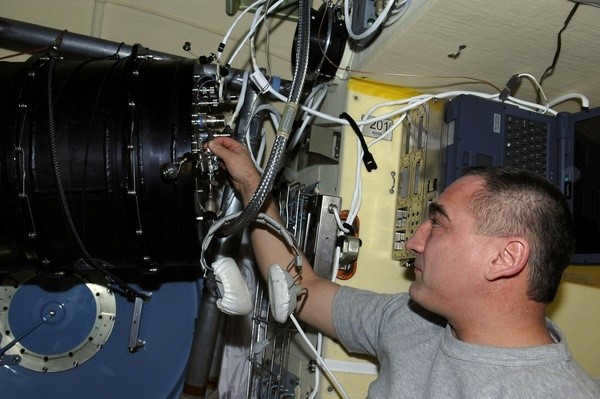
Figure 2: Plasma crystal experiment. Author24 – Online platform for sharing student papers
Furthermore, Russian cosmonauts have conducted over 100 space experiments on the International Space Station (ISS).
Physics and astrophysics share many similarities as they both explore the laws that govern our world. However, there is a crucial distinction between the two – physicists are able to validate their theoretical calculations through appropriate experiments, whereas astronomers often lack this opportunity as they primarily study the nature of distant celestial objects through their radiation.
In this passage, we will examine the primary techniques employed by astronomers to gather data about occurrences in the vast expanse of space. It appears that the primary means of acquiring such information are electromagnetic waves and subatomic particles emitted by celestial entities, as well as the gravitational and electromagnetic fields through which these entities interact with one another.
The observation of celestial objects is conducted at specialized astronomical observatories. In this regard, astronomers possess a distinct advantage over physicists – they are capable of observing processes that transpired millions or even billions of years in the past.
| The field of astrophysics examines the structure of celestial bodies, the physical conditions both on their surfaces and within their interiors, their chemical compositions, sources of energy, and more. |
For those who are curious.
Astrophysical experiments are indeed happening in space – they are conducted by nature itself, and astronomers observe the processes occurring in distant worlds and analyze the results obtained. We witness certain phenomena in real-time and glimpse into the ancient past of the Universe, a time when our civilization did not yet exist and even the solar system had not formed. In essence, the methods used for studying deep space in astrophysics are not fundamentally different from the experiments conducted by physicists on Earth’s surface. Furthermore, astronomers utilize the AMS to perform actual physical experiments on the surfaces of other celestial bodies and in the vast expanse of interplanetary space.
Dark Matter
As we learn from our studies in physics, atoms have the ability to emit or absorb energy from electromagnetic waves at various frequencies. The brightness and color of an object are determined by this ability. In order to calculate the intensity of radiation, scientists have introduced the concept of a dark matter, which is capable of absorbing and emitting electromagnetic vibrations across all wavelengths, creating a continuous spectrum.
| A dark matter absorbs all of the energy that comes into contact with its surface and then releases that energy back into space, but in a different part of the spectrum. |
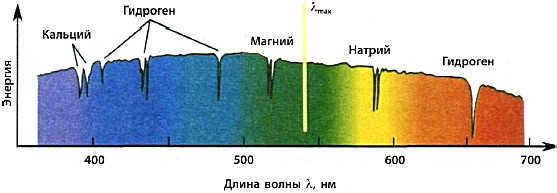
Figure 6.1. The spectrum of light emitted by a star with a temperature of 5800 K. The dark absorption lines seen in the graph are caused by different chemical elements
Stars emit electromagnetic waves with varying wavelengths. The amount of energy emitted at different wavelengths depends on the star’s surface temperature (see Fig. 6.1). This is why stars can appear in different colors, ranging from red to blue (refer to section 13 for more details). By applying the principles of blackbody radiation, which were discovered by physicists on Earth, astronomers are able to determine the temperature of distant celestial bodies (refer to Fig. 6.2). A blackbody at a temperature of 300 K primarily emits energy in the infrared part of the spectrum, which is not visible to the naked eye. At lower temperatures, a blackbody in a state of thermodynamic equilibrium appears completely black.
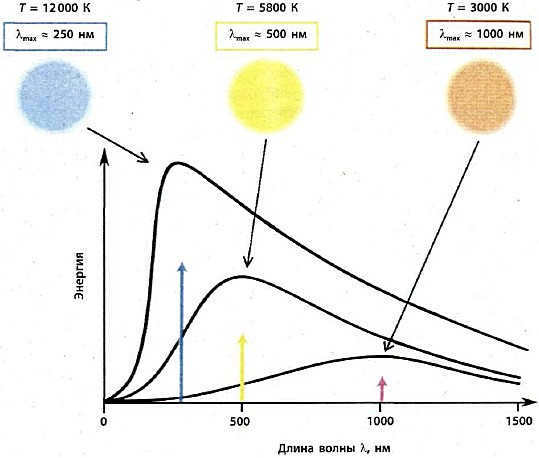
Fig. 6.2. The distribution of energy in the emission spectrum of stars can be used to determine their surface temperature. Stars with a blue color have a surface temperature of 12000 K, while stars with a red color have a surface temperature of 3000 K. As the surface temperature of a star increases, the wavelength corresponding to the maximum energy of radiation decreases.
For those who are curious
In the natural world, it is impossible to find objects that are completely black. Even black soot, which is known for its ability to absorb electromagnetic waves, can only absorb up to 99% of them. However, if a body were to be completely black and only absorb electromagnetic waves, its temperature would eventually become infinitely high. This is because a black body also radiates energy, and the balance between absorption and emission can occur at different frequencies. At a certain temperature, an equilibrium is reached where the energy emitted and absorbed are equal. Due to this equilibrium, the color of a completely black body may not necessarily be black. For example, soot in a furnace at high temperatures can appear red or even white.
Observing the stars without the use of telescopes
Our eyes are remarkable organs that allow us to gather a vast amount of information about the world around us. When it comes to stargazing, the capabilities of our eyes are determined by their resolution and sensitivity.
Resolution, also known as visual acuity, refers to our eyes’ ability to distinguish objects of various angular sizes. Scientific research has shown that the human eye’s resolving power is limited to 1' (one minute of arc; Fig. 6.3). In practical terms, this means that we can discern two stars or two letters in a book if the angle between them is greater than 1'. However, if α is less than 1', our eyes will perceive them as a single entity.
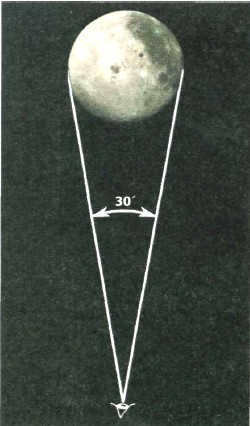
Figure 6.3. The disk of the Moon is distinguishable due to its angular diameter of 30′, while craters cannot be seen with the naked eye because their angular diameter is less than 1′. Visual acuity is determined by an angle α>1′.
We can identify the disks of the Moon and Sun because their angular diameters are visible at an angle of approximately 30′, whereas planets and stars have angular diameters less than 1′. This is why these luminaries appear as bright dots to the naked eye. When viewed from the planet Neptune, the Sun’s disk will appear as a bright star to astronauts.
The sensitivity of the eye is determined by the threshold of perception of individual quanta of light. The eye’s maximum sensitivity is in the yellow-green part of the spectrum, and we can detect 7-10 quanta that reach the retina within 0.2-0.3 seconds. In the field of astronomy, the eye’s sensitivity can be measured using apparent stellar magnitudes, which indicate the brightness of celestial objects (see § 13).
For those who are curious.
The eye’s sensitivity also depends on the size of the pupil – in low light conditions, the pupils dilate, while they shrink during the day. Before conducting astronomical observations, it is recommended to spend 5 minutes in a dark environment, as this will enhance the eye’s sensitivity.
Optical Instruments for Observing Distant Celestial Objects
Regrettably, our naked eye has limited capabilities when it comes to observing most space objects. Fortunately, telescopes (derived from the Greek words tele – meaning “far away” and skopos – meaning “to see”) provide us with the ability to see distant celestial luminaries or capture their images using other electromagnetic radiation receivers such as cameras or video cameras. In terms of their design, telescopes can be categorized into three main groups: refractors, also known as lens telescopes (see Figure 6.4) (derived from the Latin word refractus, meaning “refracting”), reflectors, or mirror telescopes (see Figure 6.5) (derived from the Latin word reflectio, meaning “bouncing back”), and mirror-lens telescopes.
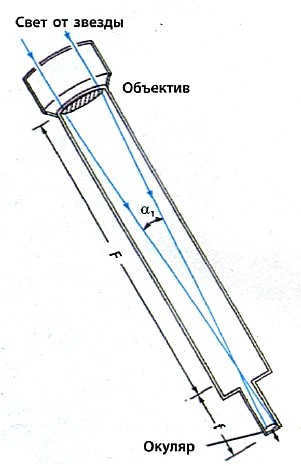
Figure 6.4 shows the schematic diagram of a refractor, also known as a lenticular telescope.
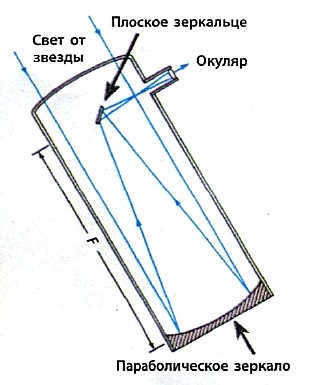
Fig. 6.5. Diagram of a mirror telescope (reflector)
Let’s imagine that there is a celestial object at an infinite distance, which is visible to the naked eye at an angle of . An objective lens, known as a collector, forms an image of the object in the focal plane at a distance from the objective (Fig. 6.4). A photographic plate, video camera, or any other image receiver is placed in the focal plane. For visual observations, a short-focus lens, also known as an eyepiece, is used as a magnifier.
The magnification of a telescope can be calculated as follows:
where – α2 is the angle of view at the eyepiece; α1 is the angle of view at which the object is visible to the naked eye; F and f are the focal lengths of the objective lens and the eyepiece, respectively.
The resolution of a telescope relies on the size of its lens, therefore a telescope with a larger lens diameter will provide a clearer image at the same magnification.
Additionally, a telescope enhances the apparent brightness of celestial objects, which will appear many times brighter than what is visible to the naked eye, in proportion to the ratio of the lens area to the pupil area. Please note that it is not safe to observe the Sun through a telescope, as its brightness can cause permanent damage to your eyesight.
Just a fun fact for you:
In order to ascertain the diverse physical attributes of celestial objects (such as their motion, temperature, chemical composition, etc.), it is imperative to conduct spectral observations, which involves measuring the distribution of energy radiation across various portions of the spectrum. To accomplish this, several supplementary tools and instruments (such as spectrographs, television cameras, etc.) have been devised, which, when used in conjunction with a telescope, enable the isolation and examination of specific segments of the spectrum’s radiation.
School telescopes are equipped with lenses that have focal lengths ranging from 80 to 100 cm. They also come with a variety of eyepieces that have focal lengths between 1 and 6 cm. This means that the magnification of school telescopes, as determined by formula (6.1), can vary from 15 to 100 times depending on the focal length of the eyepiece used for observations. On the other hand, modern astronomical observatories use telescopes with lenses that have focal lengths exceeding 10 m, which allows for magnifications exceeding 1000. However, these high magnifications are not typically used during observations due to the adverse effects of Earth’s atmosphere, such as winds and dust pollution, which significantly degrade the quality of the image.
Photomultiplier tubes and electron-optical converters are examples of electronic devices that enhance the resolution and sensitivity of telescopes by recording the radiation emitted by cosmic luminaries. These devices are based on the external photoeffect. In the late 20th century, charge-coupled devices (CCDs) were introduced for imaging, utilizing the internal photoeffect. CCDs consist of tiny silicon elements called pixels, arranged in a compact area. In addition to astronomy, CCD arrays are also used in home television cameras and digital still cameras, known as digital imaging systems (Fig. 6.6).

Moreover, CCDs have a higher efficiency compared to photographic film as they are capable of capturing 75% of photons, whereas film can only capture 5%. Consequently, CCDs significantly enhance the sensitivity of receivers for electromagnetic radiation and enable the detection of celestial objects that are several magnitudes dimmer than those detectable through traditional photography.
Radio Telescopes
Radio telescopes were designed to detect and capture electromagnetic radiation in the radio frequency range (wavelengths of 1 mm and above – see Fig. 6.7). These telescopes utilize specialized antennas to receive radio waves, which are then transmitted to a receiver. Within the radio receiver, space signals are processed and recorded using specialized instruments.
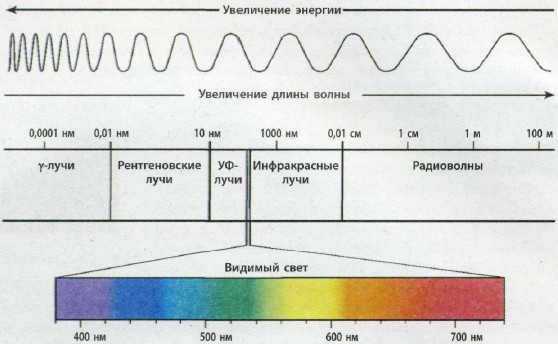
Figure 6.7. Scale of electromagnetic waves
There are two categories of radio telescopes – reflector and radio arrays. The reflector radio telescope operates in the same way as a reflector telescope (Fig. 6.5), except that the mirror used to collect electromagnetic waves is made of metal. This mirror is often shaped like a paraboloid of revolution. The larger the diameter of this parabolic “dish”, the greater the resolution and sensitivity of the radio telescope. Ukraine’s largest radio telescope, RT-70, has a diameter of 70 m (Fig. 6.8).
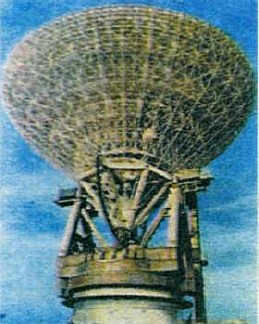
Fig. 6.8. The RT-70 radio telescope is situated in Crimea near Yevpatoria.
The arrangement of radio antennas on the Earth’s surface is known as a radio array. When viewed from above, these antennas form a pattern resembling the letter “T”. The Kharkov region is home to the UTR-2, the world’s largest radio telescope of this kind (Fig. 6.9).

Fig. 6.9. The largest radio telescope in the world, UTR-2 (Ukrainian T-shaped radio telescope; with dimensions of 1800 m x 900 m).
For those who are interested
The principle of electromagnetic wave interference allows for the combination of radio telescopes that are located tens of thousands of kilometers apart, thereby increasing their resolution to 0.0001″ – hundreds of times greater than the capabilities of optical telescopes.
Exploring the Cosmos with Spacecraft
The advent of the space age has ushered in a new era in the exploration of the cosmos through the use of Interstellar Vehicles (ISVs) and Astro-Mechanical Systems (AMSs). Space-based methods offer a significant advantage over ground-based observations, as a substantial portion of electromagnetic radiation emitted by stars and planets is trapped within Earth’s atmosphere. While this atmospheric absorption protects living organisms from harmful ultraviolet and X-ray radiation, it also restricts the flow of information from celestial bodies. In 1990, the United States created the remarkable Hubble Space Telescope, featuring a 2.4m mirror diameter (Fig. 6.10). Presently, there exist numerous space-based observatories that capture and analyze radiation across the entire electromagnetic spectrum, from radio waves to gamma rays (Fig. 6.7).
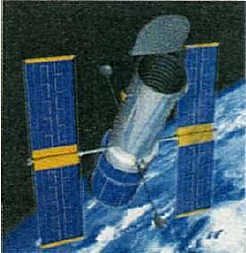
Fig. 6.10. The Hubble Space Telescope is positioned in the outer atmosphere, giving it a resolution 10 times greater and sensitivity 50 times greater than that of telescopes located on the ground
Soviet scientists have made a significant contribution to the exploration of the Universe. Their involvement led to the creation of the first satellites, which not only explored space near Earth, but also other planets. The automated interplanetary stations of the “Luna”, “Mars”, and “Venus” series transmitted images of these planets to Earth with a resolution that far surpassed the capabilities of ground-based telescopes. These images provided humanity with the first glimpses of alien worlds. Additionally, these interplanetary stations were equipped with instruments for conducting direct physical, chemical, and biological experiments.
During the era of Kievan Rus, monks were responsible for conducting astronomical observations. They documented and shared information about extraordinary celestial events such as solar and lunar eclipses, the emergence of comets, and the appearance of new stars. The introduction of the telescope led to the construction of specialized astronomical observatories, dedicated to studying celestial bodies (Fig. 6.11). The earliest examples of such observatories in Europe were the Paris Observatory in France (1667) and the Greenwich Observatory in England (1675). Nowadays, there are over 400 astronomical observatories operating on every continent.
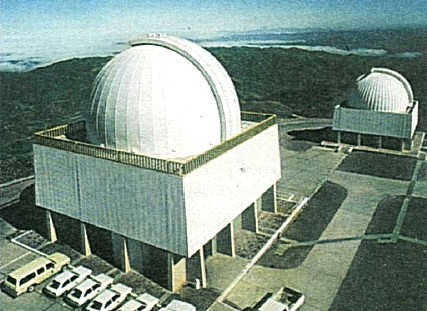
Figure 6.11. An example of an astronomical observatory
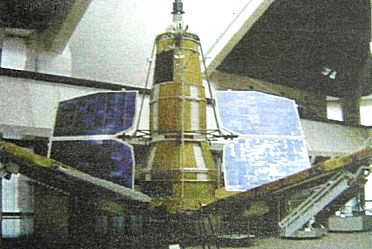
Fig. 6.12. “Sich-1”, the initial satellite from Ukraine.
Summary
Astronomy has evolved from being primarily based on optical sciences to encompassing a broader spectrum of sciences. This is because the primary means of gathering information about the Universe now involves studying electromagnetic waves and elementary particles emitted by celestial bodies, as well as the gravitational and electromagnetic fields through which these bodies interact. Thanks to modern telescopes, we are able to gather information about distant planets and observe events that occurred billions of years in the past. In essence, modern astronomical instruments not only allow us to explore space, but also to travel through time.
Unique Tests
- A telescope is an optical device that:
A. Allows us to observe celestial objects up close.
Б. Enlarges celestial objects.
В. Increases the apparent size of celestial objects.
Г. Brings us closer to planets.
Д. Receives radio waves. - What is the reason for constructing large astronomical observatories on mountains?
A. To have a better view of planets.
Б. Mountains have longer nights.
В. There is less cloud cover in the mountains.
Г. The air is clearer in the mountains.
Д. To reduce light interference. - Is it possible for a black body to appear white?
A. No, it cannot.
Б. Yes, if it is painted white.
В. Yes, if the body’s temperature approaches absolute zero.
Г. Yes, if the body’s temperature is below 0°C.
Д. Yes, if the body’s temperature exceeds 6000 K. - Which of these objects with the given surface temperature does not exist in the Universe?
A. A star with a temperature of 10000°C.
B. A star with a temperature of 1000 K.
C. A planet with a temperature of -300 °C.
D. A comet with a temperature of 0 K.
E. A planet with a temperature of 300 K. - What is the explanation for the diverse colors of stars?
- What is the reason why we are able to see more stars in a telescope compared to the naked eye?
- Why do observations conducted in space provide more information compared to ground-based telescopes?
- Why do stars appear as bright dots in a telescope, while planets appear as a disk in the same telescope?
- What is the minimum distance astronauts need to travel in order to see the Sun as a bright dot with the naked eye?
- Some individuals are said to have such sharp eyesight that they can spot large craters on the Moon without any assistance. How reliable are these claims considering that the largest craters on the Moon have a diameter of 200 km and the average distance to the Moon is 380,000 km?
- With the construction of the international space station, including a Ukrainian space block, what astronomical instruments would you recommend for researching the Universe?
A. Using a reflector that has a lens diameter of 5 meters.
B. Utilizing a refractor equipped with a lens diameter of 1 meter.
C. Employing a radio telescope with a diameter measuring 20 meters.
D. Utilizing a telescope with a magnification of 1000 and a lens diameter of 3 meters.
E. Using a telescope with a lens diameter of 3 meters and a magnification of 500.

